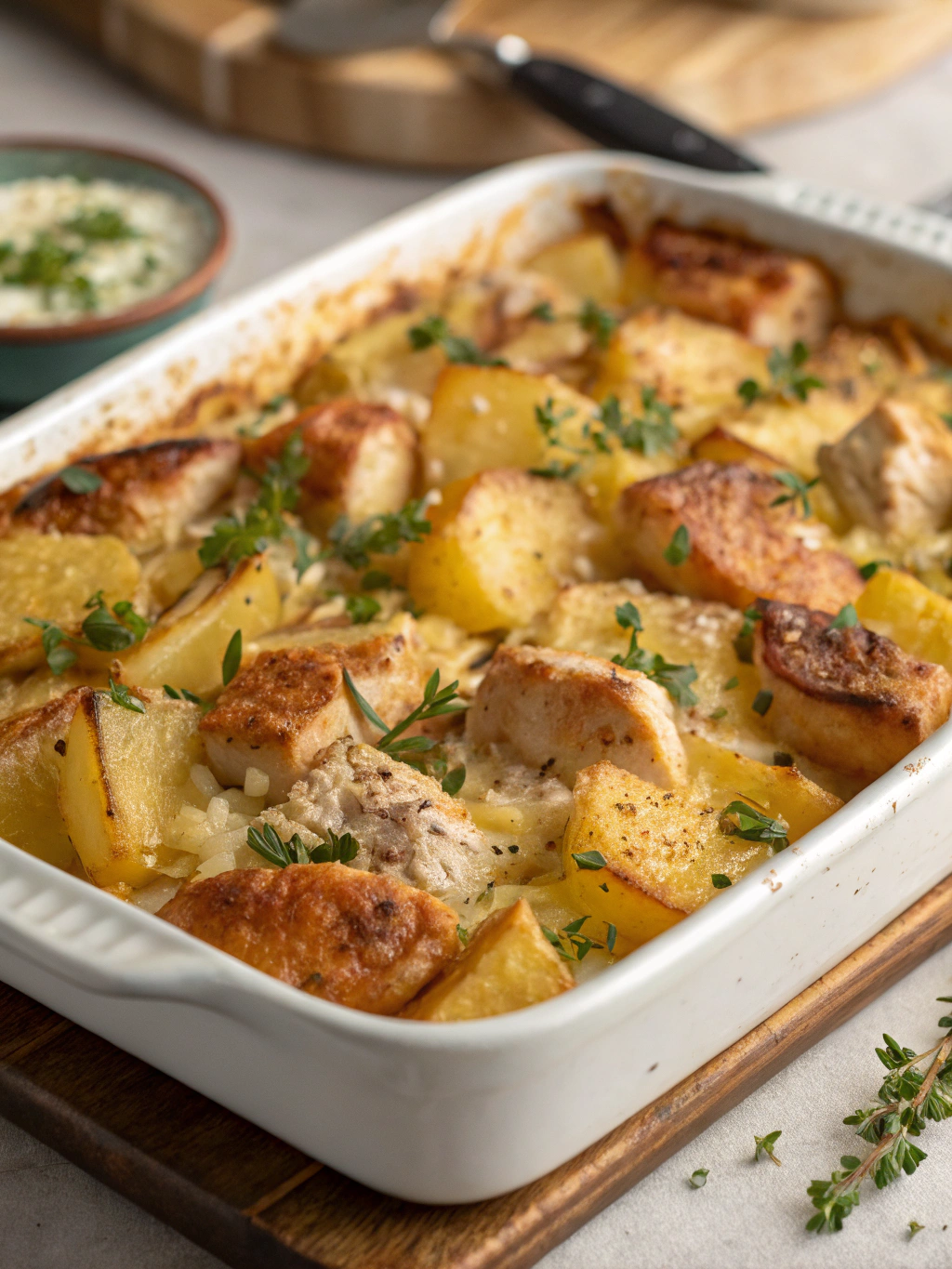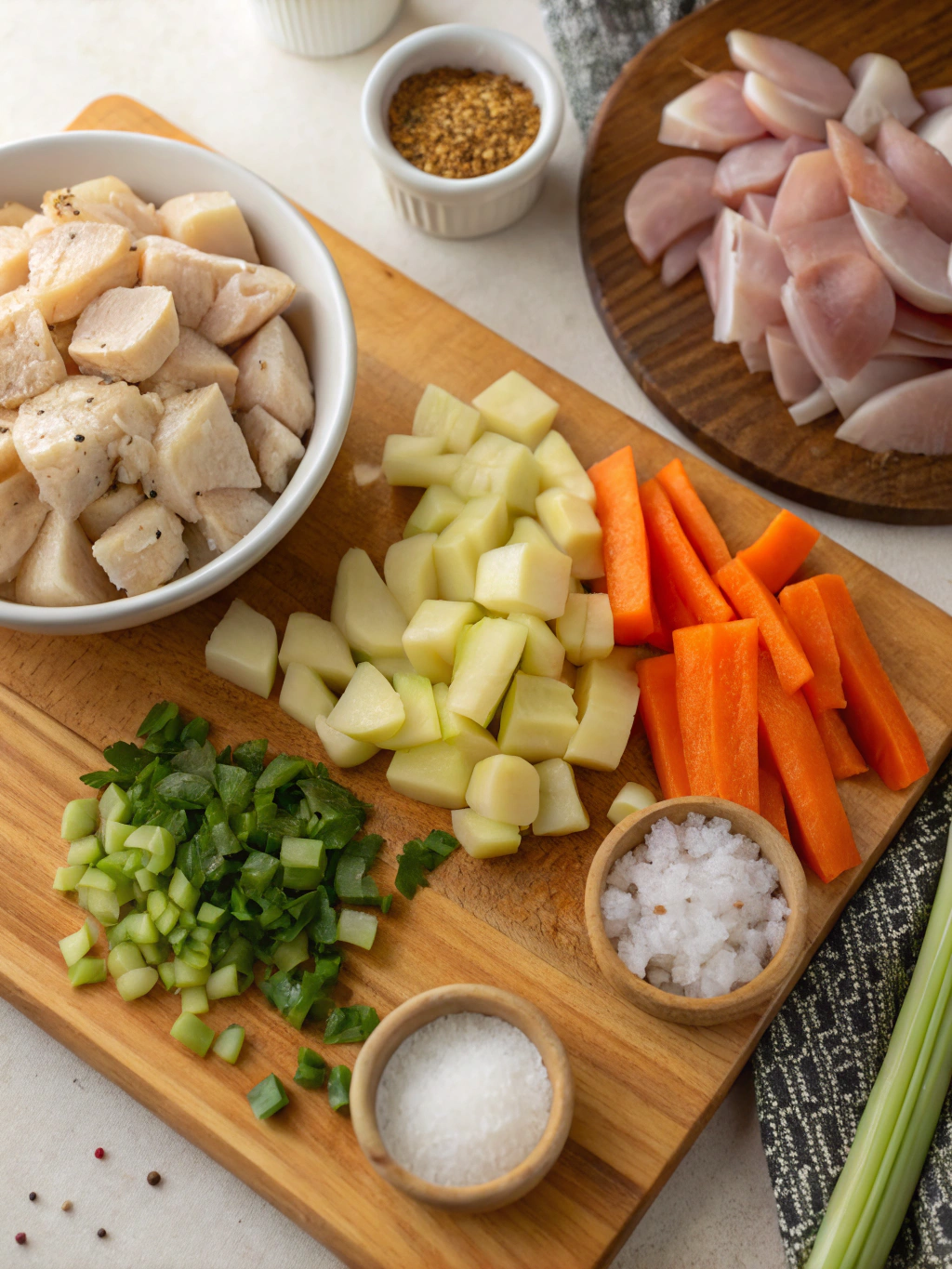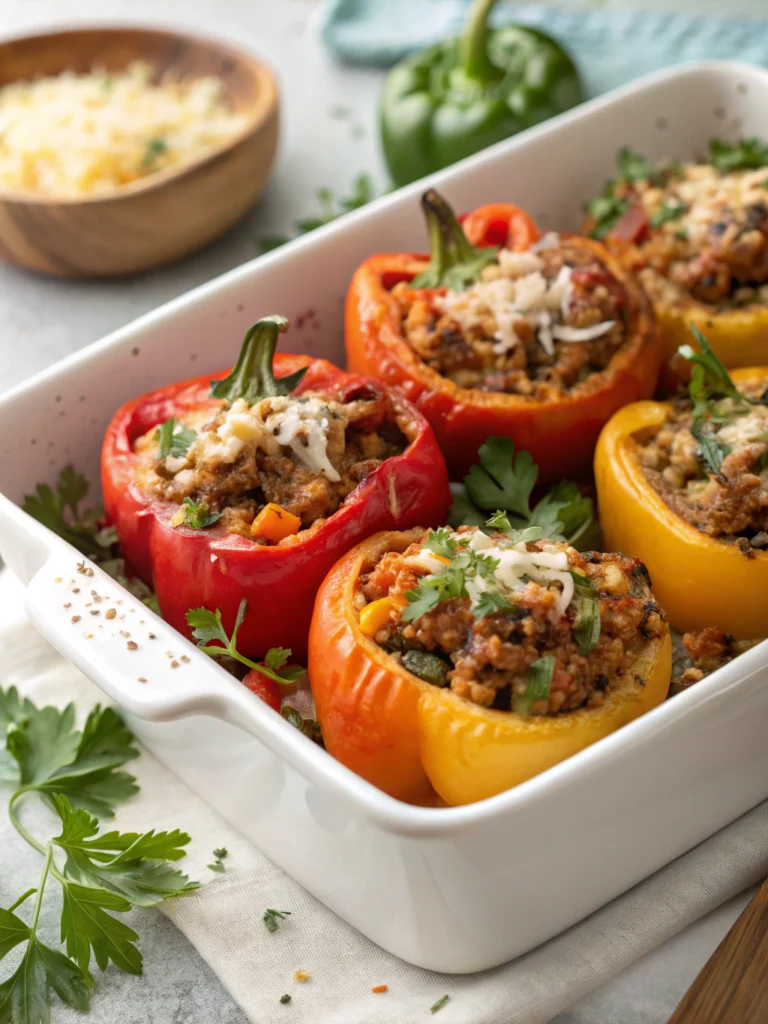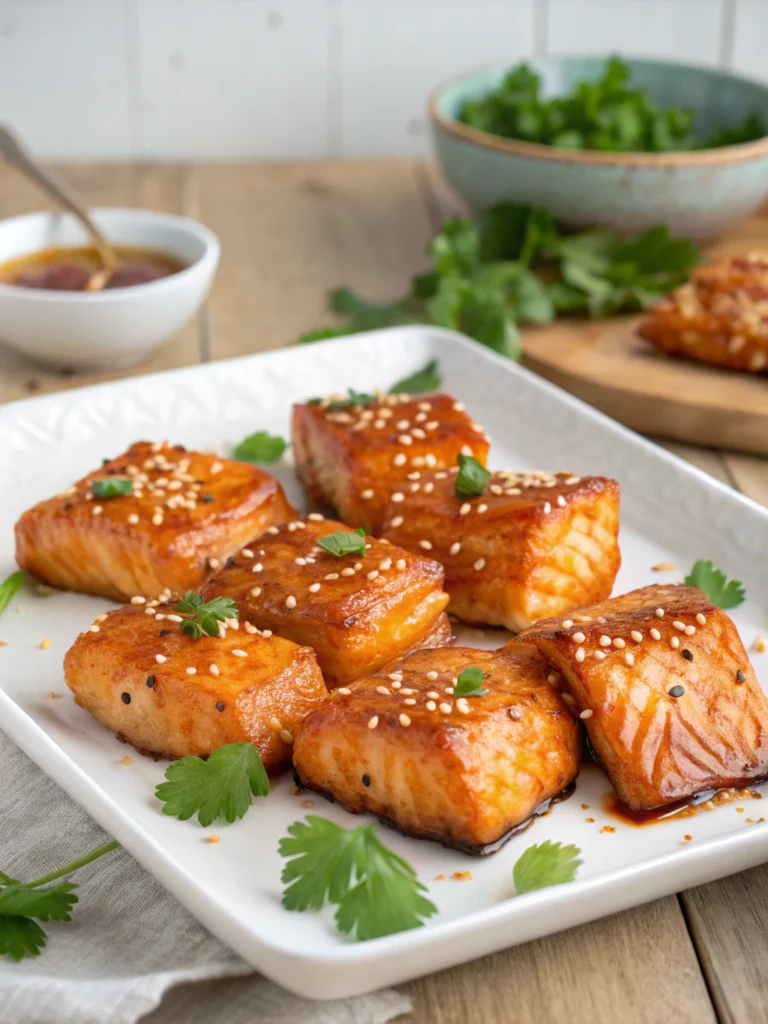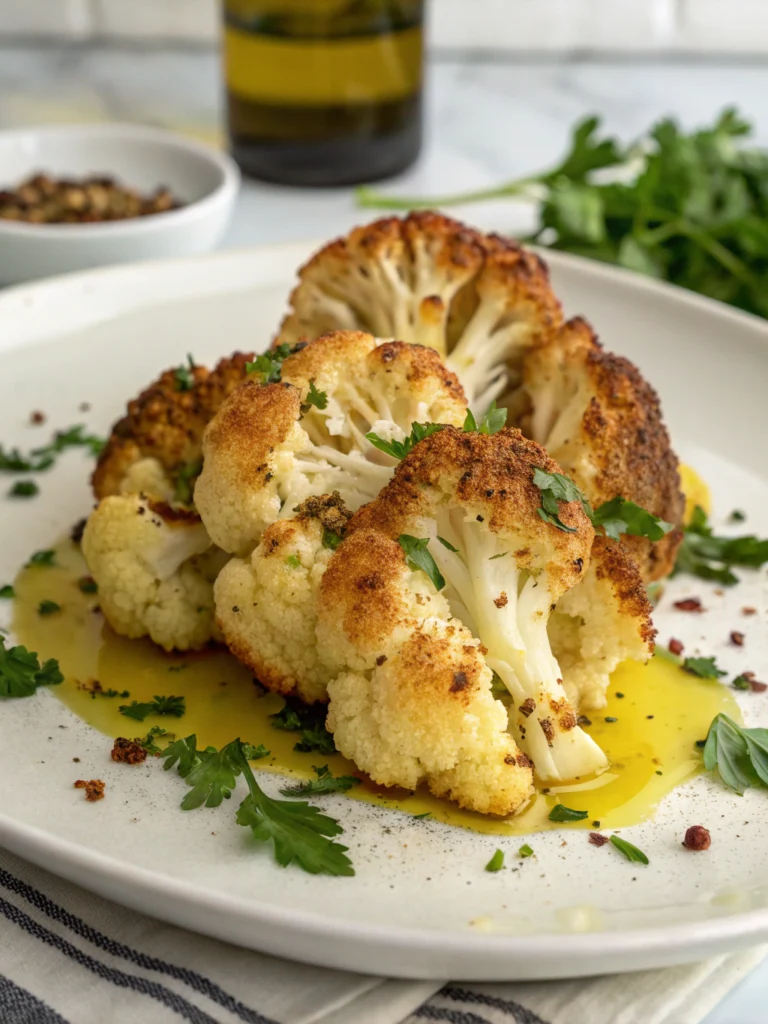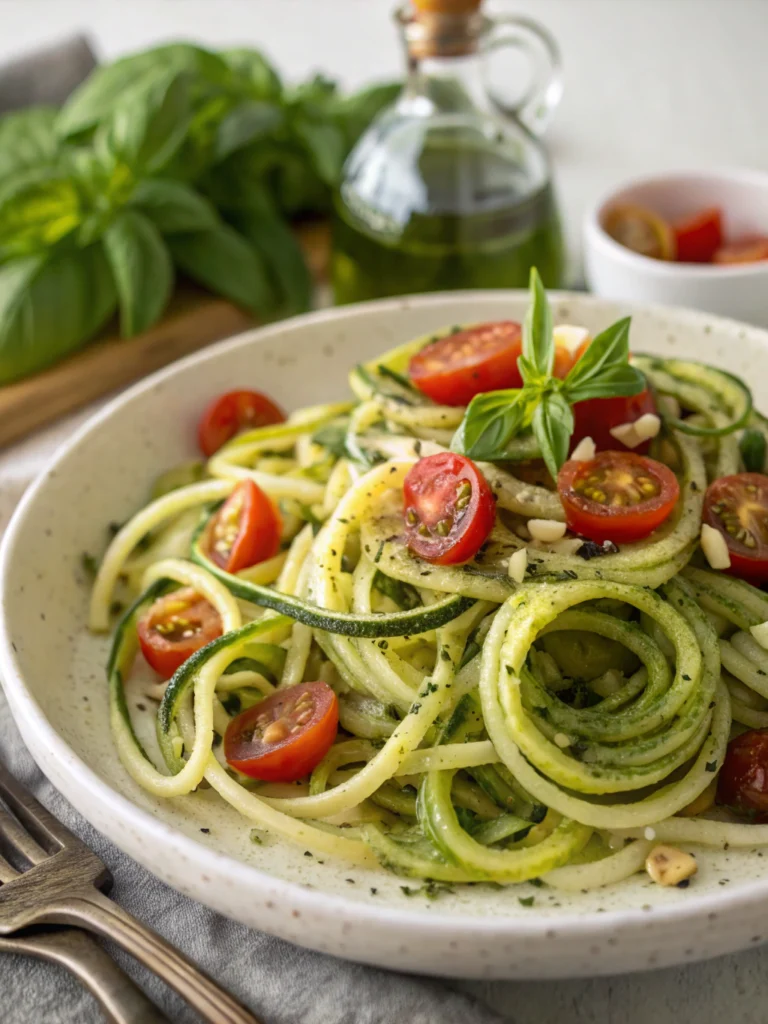Chicken and Potato Casserole
A hearty, comforting dish that combines tender chicken pieces with creamy potatoes in a rich, flavorful sauce. This crowd-pleasing casserole is perfect for family dinners and potlucks alike, offering a complete meal in one dish that’s both satisfying and delicious.
Easy Chicken and Potato Casserole Recipe
There’s something undeniably comforting about the aroma of a chicken and potato casserole baking in the oven, especially as the seasons transition to cooler weather. This classic homemade dish has graced family dinner tables for generations, combining simple ingredients that transform into something truly special when layered together and baked to perfection.
What makes this chicken and potato casserole recipe stand out is its perfect balance of flavors and textures—tender chicken pieces nestled among creamy potatoes, all enveloped in a savory herb-infused sauce that brings everything together. It’s the ultimate comfort food that doesn’t require complicated techniques or hard-to-find ingredients.
THIS RECIPE:
- Combines protein and starch in one satisfying dish
- Uses simple pantry ingredients with maximum flavor impact
- Can be prepped ahead for busy weeknights
- Customizable with seasonal vegetables or herbs
| Recipe Details | Information |
|---|---|
| Prep Time | 20 minutes |
| Cook Time | 45 minutes |
| Total Time | 1 hour 5 minutes |
| Servings | 6 servings |
| Yield | One 9×13 inch casserole |
This easy chicken and potato casserole recipe is perfect for busy households where delicious, home-cooked meals are still a priority. The beauty of this dish lies in its simplicity—just prep your ingredients, layer them in a casserole dish, and let your oven do the hard work. The result is a complete meal that satisfies both children and adults alike, making it a reliable option for weekly meal planning or casual entertaining.
Ingredients for Chicken and Potato Casserole
The quality of ingredients you choose for your chicken and potato casserole will significantly influence the final result. Since this recipe relies on relatively few components, selecting the best possible ingredients within your budget will elevate the entire dish from good to exceptional.
Main Ingredients:
- 2 pounds boneless, skinless chicken breasts, cut into 1-inch pieces
- 2 pounds Yukon Gold potatoes, sliced ¼-inch thick
- 1 large onion, thinly sliced
- 3 cloves garlic, minced
- 2 cups chicken broth, preferably low-sodium
- 1 cup heavy cream
- 2 tablespoons butter
- 2 tablespoons olive oil
- 2 teaspoons fresh thyme leaves (or 1 teaspoon dried)
- 1 teaspoon fresh rosemary, finely chopped (or ½ teaspoon dried)
- 1 cup shredded cheddar cheese
- ½ cup grated Parmesan cheese
- Salt and freshly ground black pepper to taste
- 2 tablespoons fresh parsley, chopped (for garnish)
For the Seasoning Blend:
- 1 teaspoon paprika
- ½ teaspoon garlic powder
- ½ teaspoon onion powder
- ¼ teaspoon cayenne pepper (optional, for heat)
| Ingredient Category | Recommended Quantity | Quality Tips |
|---|---|---|
| Chicken | 2 pounds boneless, skinless breasts | Choose organic or free-range chicken for best flavor. Thighs can be substituted for moister results. |
| Potatoes | 2 pounds Yukon Gold | Yukon Golds have the ideal balance of starch and waxiness for casseroles. Russets or red potatoes can work but will yield different textures. |
| Dairy | 1 cup heavy cream, 1 cup cheddar, ½ cup Parmesan | Full-fat dairy products create the richest, most satisfying sauce. Freshly grated cheese melts more evenly than pre-shredded. |
| Aromatics | 1 onion, 3 cloves garlic, fresh herbs | Fresh herbs provide brighter flavor, but dried work in a pinch. Use a 3:1 ratio when substituting fresh for dried. |
Pro tip: For the most flavorful chicken and potato casserole, marinate the chicken pieces in a little olive oil with herbs and garlic for 30 minutes before cooking.
How to Make Chicken and Potato Casserole
Creating a homemade chicken and potato casserole involves several key steps, each building layers of flavor that culminate in a deliciously satisfying dish. The process balances proper seasoning of individual components with creating a harmonious final result where the flavors meld beautifully together.
Preheat your oven to 375°F (190°C) and lightly grease a 9×13 inch casserole dish.
Prepare the chicken:
- In a large skillet, heat 1 tablespoon olive oil over medium-high heat
- Season chicken pieces with salt, pepper, and half of the seasoning blend
- Brown the chicken in batches (not fully cooking it) for about 2-3 minutes per batch
- Remove and set aside in a bowl
Create the flavor base:
- In the same skillet, add remaining tablespoon of olive oil
- Sauté the onions until translucent, about 3-4 minutes
- Add minced garlic and cook for another 30 seconds until fragrant
- Stir in butter until melted
Make the sauce:
- Sprinkle 2 tablespoons of flour over the onion mixture and stir for 1 minute
- Gradually whisk in chicken broth, stirring constantly to prevent lumps
- Add heavy cream, thyme, rosemary, and remaining seasoning blend
- Bring to a simmer and cook until slightly thickened, about 3-5 minutes
- Season with salt and pepper to taste
Assemble the casserole:
- Arrange half of the sliced potatoes in an overlapping layer in the prepared baking dish
- Season lightly with salt and pepper
- Spread half of the browned chicken pieces over the potatoes
- Pour half of the sauce over the chicken and potatoes
- Repeat with remaining potatoes, chicken, and sauce
- Ensure all potatoes are submerged in liquid to ensure proper cooking
Add cheese topping:
- Cover the dish with aluminum foil
- Bake for 30 minutes
- Remove foil, sprinkle with both cheeses
- Return to oven uncovered for 15 more minutes, until potatoes are tender and top is golden brown
Let the casserole rest for 10-15 minutes before serving to allow the sauce to thicken and flavors to settle.
Pro tip: Check potato doneness by inserting a knife into the center of the casserole—it should slide through the potato slices easily with no resistance.
Tips for Making Chicken and Potato Casserole
The difference between a good and great chicken and potato casserole often comes down to small but impactful details in preparation and technique.
Expert Advice:
- Potato slicing consistency – Cut potatoes to a uniform thickness (about ¼ inch) to ensure even cooking throughout the casserole
- Layering technique – Create distinct layers with each component rather than mixing everything together for better texture contrast
- Proper seasoning – Season each component separately (chicken, potatoes, sauce) for depth of flavor
- Cheese application – Save the cheese for the final baking stage to prevent it from separating or becoming too chewy
| Technique Area | Recommendation | Why It Matters |
|---|---|---|
| Chicken Preparation | Pat chicken dry before seasoning and browning | Removes excess moisture for better browning and flavor development |
| Potato Selection | Choose medium-starch varieties like Yukon Gold | Maintains shape while absorbing flavor and contributing to creamy texture |
| Sauce Thickness | Simmer until it coats the back of a spoon | Ensures proper consistency that will further thicken while baking |
| Baking Method | Start covered, finish uncovered | Allows potatoes to cook through before cheese browns and creates a desirable crust |
When making homemade chicken and potato casserole, be mindful of your casserole dish depth. A deeper dish requires longer cooking time but results in a moister casserole, while a broader, shallower dish creates more surface area for browning and a higher ratio of crispy top to creamy interior.
For the best flavor development, don’t rush the step of browning the chicken. While you’re not cooking it through at this stage, the caramelization creates essential flavor compounds that will infuse the entire casserole as it bakes.
Make-Ahead Instructions
One of the greatest advantages of chicken and potato casserole is its make-ahead potential, making it perfect for busy weeknights or entertaining.
To prepare your chicken and potato casserole in advance:
- Complete all steps through assembly in your baking dish, but do not bake
- Cool completely if ingredients are still warm
- Cover tightly with plastic wrap and then aluminum foil (double layer prevents odor absorption)
- Refrigerate for up to 24 hours before baking
When ready to bake your prepared casserole:
- Remove from refrigerator 30 minutes before baking to take the chill off
- You may need to add 10-15 minutes to the covered baking time for a cold casserole
- Proceed with uncovering and adding cheese as directed in the original recipe
You can also prepare individual components separately up to 2 days in advance:
- Pre-cook and refrigerate the chicken pieces
- Prepare the sauce and refrigerate in a separate container
- Slice the potatoes and store submerged in water in the refrigerator (this prevents browning)
- Drain and pat the potatoes dry before assembling the casserole
Pro tip: If making components ahead separately, warm the sauce slightly before assembly to ensure even heat distribution during baking.
Storing Leftovers
Proper storage of leftover chicken and potato casserole ensures food safety while maintaining the dish’s quality and flavor for subsequent meals.
After your meal, allow the casserole to cool slightly (no more than 1 hour at room temperature) before storing to prevent bacterial growth. Divide leftovers into portion-sized, shallow containers to facilitate rapid cooling. Glass containers with airtight lids work best as they don’t absorb odors or stain from the sauce.
Refrigerated chicken and potato casserole will keep for 3-4 days when properly stored. Always check for any signs of spoilage before reheating—unusual odors, appearance, or texture indicate the food should be discarded.
For best results when reheating:
- Microwave individual portions covered with a damp paper towel for 2-3 minutes, stirring halfway through
- For larger portions, reheat in a 350°F oven for 15-20 minutes until the internal temperature reaches 165°F
- Add a tablespoon or two of chicken broth if the casserole seems dry during reheating
Food Safety Reminder: Never leave chicken and potato casserole at room temperature for more than 2 hours to prevent bacterial growth.
Freezing Chicken and Potato Casserole
While many casseroles freeze beautifully, chicken and potato casserole requires special consideration due to the potato component, which can sometimes change texture when frozen and thawed.
For best freezing results:
- Prepare and bake the casserole completely
- Cool thoroughly to room temperature
- Portion as desired – either whole casserole or individual servings
- Wrap tightly in plastic wrap, followed by aluminum foil
- Label clearly with name and date
- Freeze for up to 2 months (quality begins to decline afterward)
When ready to enjoy your frozen casserole:
- Thaw overnight in the refrigerator for best texture results
- Remove outer wrapping but keep in original baking dish
- Cover with foil and reheat in a 350°F oven for 20-30 minutes
- Check internal temperature reaches 165°F before serving
- Remove foil for the last 5 minutes if you want to re-crisp the top
Pro tip: For best results with freezing, slightly undercook the potatoes in the original preparation. They’ll finish cooking during the reheating process and maintain a better texture.
Serving Suggestions
A chicken and potato casserole can stand alone as a complete meal, but complementary sides and accompaniments can enhance the dining experience.
Vegetable Sides:
- Roasted Brussels sprouts with balsamic glaze
- Steamed green beans with sliced almonds
- Simple garden salad with vinaigrette
- Sautéed garlic spinach
Bread Accompaniments:
- Crusty artisan bread for soaking up the delicious sauce
- Soft dinner rolls with herbed butter
- Garlic knots or breadsticks
For an elegant presentation, serve individual portions in wide, shallow bowls with a sprinkle of fresh herbs and an extra drizzle of good olive oil. Alternatively, bring the entire casserole to the table in its baking dish for a homestyle, family-oriented presentation.
Beverage Pairings:
- White wines: Chardonnay or Viognier complement the creamy elements
- Beer: A light amber ale or farmhouse saison pairs wonderfully
- Non-alcoholic: Sparkling water with lemon or a crisp apple cider
This hearty chicken and potato casserole is best served hot or warm, allowing the flavors to shine and the sauce to maintain its creamy consistency.
FAQ
Can I use chicken thighs instead of breasts in this chicken and potato casserole?
Absolutely! Boneless, skinless chicken thighs are an excellent substitution and often result in a more flavorful, moist casserole. Dark meat is more forgiving if slightly overcooked and brings richer flavor to the dish. The cooking time remains essentially the same, but you might find the end result has more depth of flavor.
What can I substitute for heavy cream to make a lighter version?
For a lighter chicken and potato casserole, you can substitute half-and-half or whole milk for the heavy cream. This will reduce the calorie and fat content but will result in a slightly less creamy sauce. If using milk, consider increasing the flour in the roux by 1 tablespoon to maintain proper thickness. Evaporated milk (not condensed) is another good option that adds creaminess without all the fat of heavy cream.
My potatoes didn’t cook through completely. What went wrong?
Undercooked potatoes in a chicken and potato casserole typically result from one of several issues: the potato slices may have been cut too thick (aim for ¼ inch thickness), the casserole might need more liquid, or it simply needed more cooking time. If your potatoes are still firm, cover the casserole again with foil and return it to the oven for an additional 15-20 minutes. Pre-boiling the potato slices for 5 minutes before assembly can help prevent this issue in the future.
Can I add vegetables to this casserole recipe?
This chicken and potato casserole is very adaptable to additional vegetables. Good options include:
- 1 cup frozen peas added directly to the sauce
- 2 cups broccoli florets (blanched first for best texture)
- 1 cup sliced mushrooms (sautéed with the onions)
- 1 cup diced carrots (pre-cook for 5 minutes for proper tenderness)
Add vegetables either as an additional layer or incorporated into the sauce, depending on your preference. Just be sure any added vegetables are either pre-cooked or cut small enough to cook through during the casserole baking time.
Why is my casserole sauce watery after baking?
A watery sauce in your chicken and potato casserole can occur if the potatoes release excess moisture during baking or if the sauce wasn’t sufficiently thickened before assembly. To fix a watery casserole, remove it from the oven, carefully pour off excess liquid into a small saucepan, whisk in 1 tablespoon cornstarch mixed with 1 tablespoon cold water, bring to a simmer until thickened, then pour back over the casserole before serving. For future batches, ensure your sauce coats the back of a spoon before assembly, and consider patting your potato slices dry if they were rinsed after slicing.

